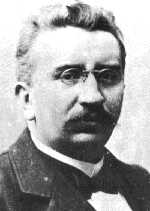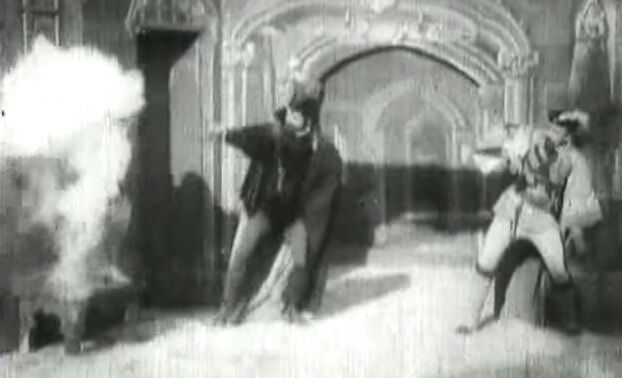
Last week I mentioned my thesis on cyberpunk. Yesterday it arrived in the e-mail. Today I’m going to tweet some information from it.
This is about old-school cyberpunk (CP hereafter), CP as of 1995, so some of my points are out of date now. But others are still relevant.
1/
This is about old-school cyberpunk (CP hereafter), CP as of 1995, so some of my points are out of date now. But others are still relevant.
1/
CP is frontier literature. Frontier lit was traditionally used to justify the creation/establishment of the US; later, to justify our economic growth, our emergence as a nation-state & our approach to modernization. It addressed issues of space, racial purity & gender roles.
2/
2/
Hardboiled (HB) detective fiction made the city the frontier. HB addressed corruption, the downfall of the city, the US’ future, changing gender roles & gender performance. HB “generalized petty-bourgeois resentment against the collapse of the Southern California dream.”
3/
3/
Science fiction (SF) is frontier literature. CP is the newest (as of 1995) emergent subgenre of SF. So Westerns -> HB -> SF -> CP. CP takes tropes & motifs from all three of its predecessors, including the frontier, the gunfighter bound by a code, the decaying/dangerous city. 4/
Also taken: the frontier as source of character renewal.
However, in CP the gunfighter is no longer defender of an oppressed social class, but is instead the tool of oppressive society. Too, the gunfighter’s code values anachronistic norms like “honor” & respecting the past. 5/
However, in CP the gunfighter is no longer defender of an oppressed social class, but is instead the tool of oppressive society. Too, the gunfighter’s code values anachronistic norms like “honor” & respecting the past. 5/
CP is much more postmodern in content, style, & textual presentation than traditional lit Westerns & Modernist HB.
Violence--more necessary to CP than to Westerns & HB—is usually hyperviolence—violence-as-simulacrum (hello, Baudrillard!).
6/
Violence--more necessary to CP than to Westerns & HB—is usually hyperviolence—violence-as-simulacrum (hello, Baudrillard!).
6/
In Westerns, the frontier is the site of competition between “civilization” and “savagery.” But implicit in the genre & in readers’ assumptions is the understanding that “civilization” will inevitably win. The “savages” will inevitably be driven away.
7/
7/
In HB, the conflict in the urban frontier between civilization & savagery is already over--and the savages won. Further battles are pointless. So violence in HB loses its moral stature & the hero’s excellence at violence is not an indicator of the hero’s moral superiority.
8/
8/
Significant influence of Japanese culture (as it was perceived by the writers) on CP, esp. the "bushido ethic" and samurai films. CB a very creole genre, drawing from many different sources, but Japanese culture a more prominent source & inspiration than others.
9/
9/
The politics of CP are much, much different from Westerns & HB. CP condemns the class system underpinning both Westerns & HB. CP vehemently condemns late-period capitalism in ways that neither predecessor would or could. Westerns mod-con; HB kinda lefty; CB hardcore left.
10/
10/
The idea of the “natural aristocracy,” essential part of Westerns & HB, is disposed of with force in CB. No one is born special in CB.
CP condemns the forms of gvt that Westerns & HB endorse and instead posits communitarian socialism as the only good form of gvt.
11/
CP condemns the forms of gvt that Westerns & HB endorse and instead posits communitarian socialism as the only good form of gvt.
11/
In CP readers know that there is no triumph for civilization over the “real” (urban) frontier. The urban frontier is lost—was lost a long time before the hero’s time—and cannot be won, rescued, or redeemed. And CP readers knew/know that.
12/
12/
CP is scornful of the idea of the inevitable onward progress of civilization. CP heroes are usually hostile toward progress, as progress and innovation threaten the traditions that the CP hero defends & the ideals they embody. Too, CP progress is usually linked to greed.
13/
13/
So CP & its heroes don’t want more progress/innovation. But in CP the heroes know that their defense of traditions, of the morals & ways of previous generations, is ultimately doomed. They will lose, sooner or later, & “progress” will win. There’s no HEA for CP heroes.
14/
14/
Quoting Bruce Sterling, cyberpunk examines the "lateral futures of today's information technology rather than the old linear futures of space adventure."
[Reading myself, in 1995, writing about what the Internet would become is pretty cringe-inducing. I was so wrong].
15/
[Reading myself, in 1995, writing about what the Internet would become is pretty cringe-inducing. I was so wrong].
15/
In Westerns, character regeneration comes through exposure to the frontier or to violence. In HB regeneration is not possible--heroes are stuck in the hopeless, spiritually dead urban environment. In CP regeneration is only possible in virtual frontier, not in “real” life.
16/
16/
In CP cyberspace is both escape *and* salvation. Which is necessary, as “spiritual exhaustion” is the dominant character mode in CP. The only religion that is credible in CP is voodoo, but even then it’s voodoo in cyberspace, not in reality.
17/
17/
In CP heroes, both hackers & gunfighters, are marginalized members of society to a far greater degree than heroes in Westerns or HB. Hackers are representative of CB’s postmodern cynicism & antipathy for the multinational corporations who wield the real power in the world.
18/
18/
Worse, in CP (as in Westerns/HB) assimilation of marginalized heroes is nearly impossible. Marginalized characters only fit on the frontier; their work settles the frontier; they don’t fit in the newly settled lands, so have to keep moving to keep up with the frontier.
19/
19/
CB’s postmodern elements: an incredulity towards metanarratives; a fragmentation of narrative and consciousness; irony; indeterminacy; simulacra; and ontological uncertainty. CB uses traditional fictional structures but overlays them with postmodernism.
20/
20/
What should’ve been more emphasized in my thesis, though I did devote a chapter to it: CP heroes can be anyone. In Westerns & HB heroes are usually white males. But in CP the postmodern subject is the norm: heroes can be any ethnicity, any race, any gender, any religion.
21/
21/
In CB “male” and “female” roles are completely undone. Stereotypical depictions of gender, sexuality, and race are undone. “Cowboy” hackers & gunfighters are often women. Heroines ride off into the sunset, leaving a man behind to cry “Shanette!”, as often as male protags do. 22/
In CB heroes can be LGBQT+. Heroes can change anything about themselves, including appearances, through surgery—by choice. Origins, biology, geography, are not destiny. It’s not “it’s not where you’re from, it’s where you’re at;” “where you’re from” is wholly irrelevant.
23/
23/
The traditional master narrative of Westerns & HB—white male hero, women as objects to be conquered romantically, POC as Others—is, in proper postmodern fashion, reduced to one narrative among many, allowing for the literary representation of POC narratives & realities.
24/
24/
1995 me didn’t quite think this last point through, but to 2020 me it seems clear. CB is a postmodern genre, but it is very prescriptive in its disposal of the traditional white male WASP hero in favor of a truly democratic approach to protagonists. Heroes can be *anyone*.
25/
25/
This is why CP w/white male hetero protags is so disappointing. CP more than other genres, because of the in-genre fluidity of identity, should represent reality: more female protags than male, more POC protags than white, 20-25% of heroes LGBQT+, more international than US. 26/
CP not just encourages the replacement of traditional master narrative of Western genre heroes, it *requires* it. CP should be--must be--outside US/Western framing; outside white viewpoint/lens; outside of male dominance; outside the tyranny of compulsive heterosexuality.
27/
27/
That so much of CP has not been that & instead became ossified into sexist, racist, xenophobic cliché rather than embracing the new, the now, the fluid, is a colossal let down.
For the curious, the bibliography of works cited in the thesis is here: jessnevins.com/blog/?p=972
28/
For the curious, the bibliography of works cited in the thesis is here: jessnevins.com/blog/?p=972
28/
I realize I'm being prescriptive in my definition of what cyberpunk is--I cop to that--but I think cliched cyberpunk hasn't thought through the implications of the genre's core, and is lazily & shoddily done. I suppose it's still cyberpunk--but it's a betrayal of the genre. 29/29
• • •
Missing some Tweet in this thread? You can try to
force a refresh













